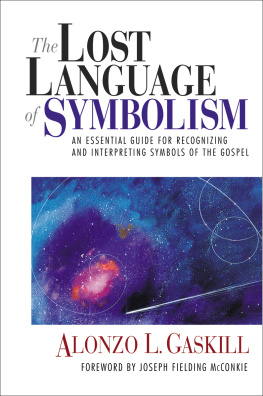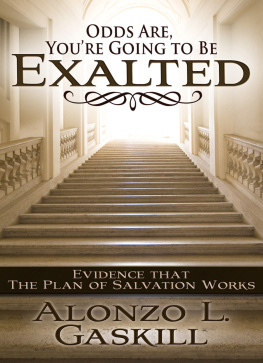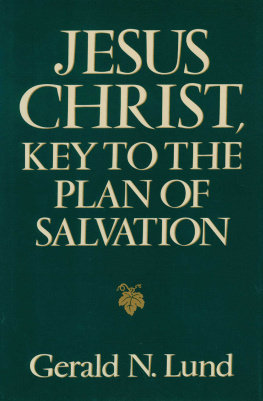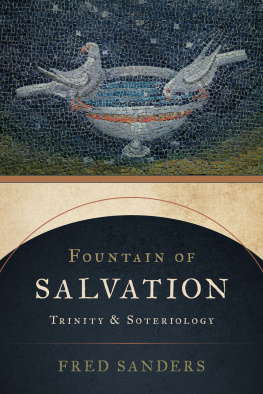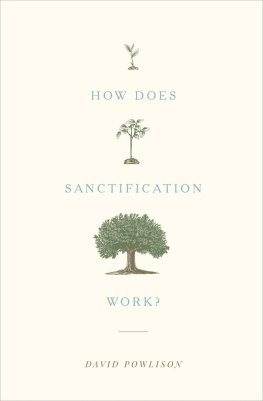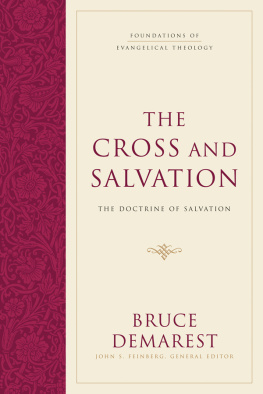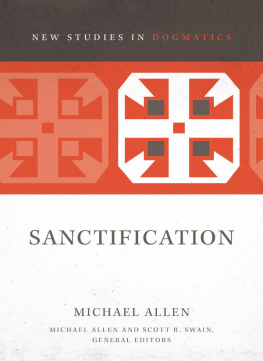Gaskill - The Savior, Symbols and Salvation
Here you can read online Gaskill - The Savior, Symbols and Salvation full text of the book (entire story) in english for free. Download pdf and epub, get meaning, cover and reviews about this ebook. year: 2013;2008, publisher: Deseret Book Company, genre: Religion. Description of the work, (preface) as well as reviews are available. Best literature library LitArk.com created for fans of good reading and offers a wide selection of genres:
Romance novel
Science fiction
Adventure
Detective
Science
History
Home and family
Prose
Art
Politics
Computer
Non-fiction
Religion
Business
Children
Humor
Choose a favorite category and find really read worthwhile books. Enjoy immersion in the world of imagination, feel the emotions of the characters or learn something new for yourself, make an fascinating discovery.
The Savior, Symbols and Salvation: summary, description and annotation
We offer to read an annotation, description, summary or preface (depends on what the author of the book "The Savior, Symbols and Salvation" wrote himself). If you haven't found the necessary information about the book — write in the comments, we will try to find it.
Gaskill: author's other books
Who wrote The Savior, Symbols and Salvation? Find out the surname, the name of the author of the book and a list of all author's works by series.
The Savior, Symbols and Salvation — read online for free the complete book (whole text) full work
Below is the text of the book, divided by pages. System saving the place of the last page read, allows you to conveniently read the book "The Savior, Symbols and Salvation" online for free, without having to search again every time where you left off. Put a bookmark, and you can go to the page where you finished reading at any time.
Font size:
Interval:
Bookmark:


All rights reserved. No part of this book may be reproduced in any form or by any means without permission in writing from the publisher, Deseret Book Company (permissions@deseretbook.com), P.O. Box 30178, Salt Lake City Utah 84130. This work is not an official publication of The Church of Jesus Christ of Latter-day Saints. The views expressed herein are the responsibility of the author and do not necessarily represent the position of the Church or of Deseret Book. Deseret Book is a registered trademark of Deseret Book Company.
The Lost Language of Symbolism
The Lost Language of Symbolism
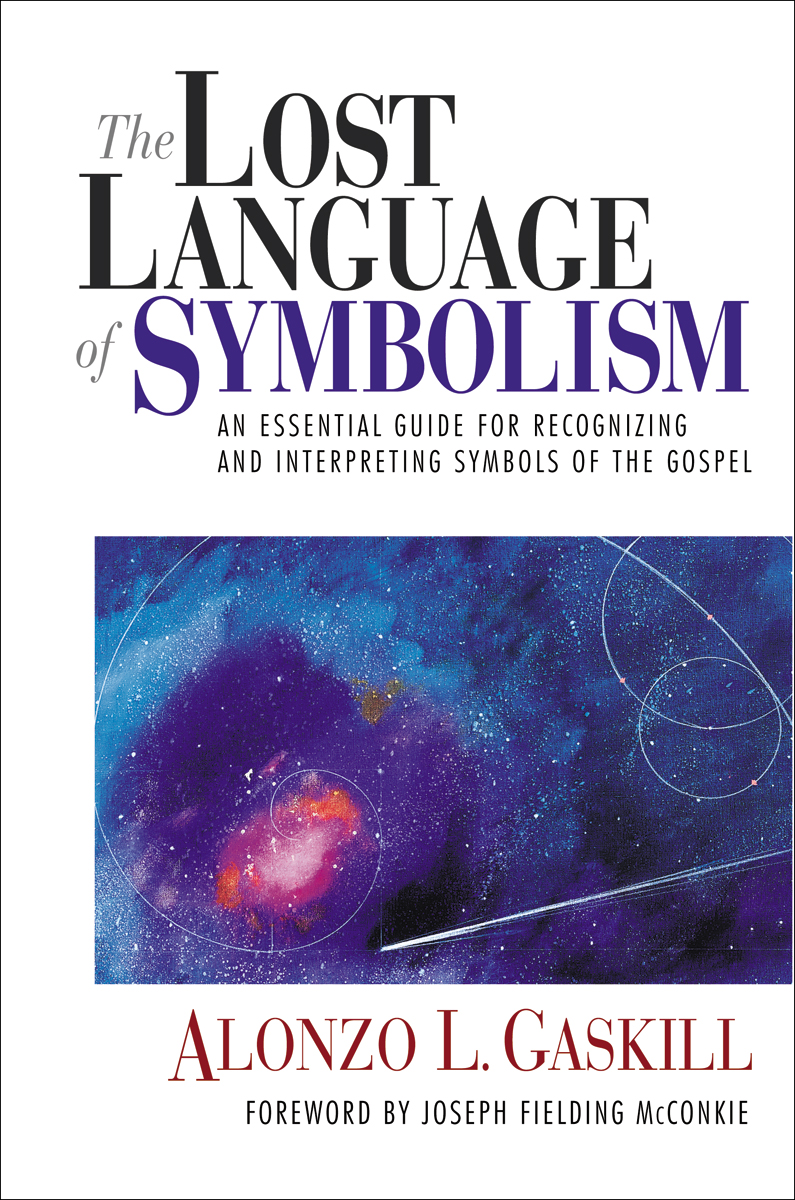
Foreword
Most Latter-day Saints are scripturally literate and do some scriptural reading and study. Yet virtually all of us could enhance our understanding and love of the scriptures by improving our fluency in the language of symbols. This is equally true of the temple. An increased understanding of the scriptures always brings with it a greater love and appreciation for everything that takes place in the temple. I was quite surprised by a comment a temple worker made to me the other day. He said, "People keep asking me questions about the symbolism of the temple. Since I don't understand it I just tell them it doesn't matter." This seemed to me almost like saying, "Since I do not appreciate good music I make it a point to discourage others from doing so." Or perhaps like the person who said to me, "I'm sorry, I cannot hear what you are saying without a hearing aid, and I don't like to wear my hearing aid."
Symbolism is a marvelously instructive and expressive language. It is a universal and timeless language. In the context of the gospel, symbolism bounds cultures to bind the saints of all gospel dispensations together. It partakes of the language of the heart and the language of the Spirit. It gives a fulness to our expression and understanding as it draws upon the eloquence of life's experiences and associations. It brings color and life to the spoken word and emotion and meaning to the world of visual expression.
As Alonzo Gaskill deftly points out in this work, the language of symbolism embraces everything from the dust of the earth to the glories of the heavens. To miss what is being expressed or taught with symbols is like living in a world without sunsets or autumn leaves. It also makes you a first cousin to the fellow who could not read and refused to learn because he was getting along just fine without being able to do so.
Even a quick glance reveals how much more interesting our world is when we are conversant with the language of symbolism. For instance, it is my privilege, with many others, to hold the Melchizedek Priesthood. And why is it so called? What great lesson is to be found within its name? The name Melchizedek is created by combining two Hebrew words: the word "Melch," which means king, and the word "Zedek," which means righteousness. Thus Melchizedek means "king of righteousness" (Hebrews 7:2). The name is a constant reminder to me that it is my destiny to become a king and that the power and authority that is minethe extent of my kingship or influenceexists only within the bounds of righteousness. Should I step outside the bounds of righteousness I am without power and authority.
I also note with interest that the Church is governed at all levels by a presidency of three. These presidencies are in similitude of the heavenly presidency of three, or the Godhead. A presidency's likeness to the Godhead clearly dictates the spirit and purpose of all that they do. The idea of counselors or a presidency also reminds us that no man is left to stand alone.
As we examine the government of the Church we also notice that its second leading quorum is the Quorum of the Twelve. Why twelve? Would not eleven do, or would thirteen be too many? It is significant that there were twelve tribes in Israel and the great promise made to them was that in the last days they would be restored to the greatness and glory of David's day. Thus the existence of a Quorum of the Twelve is a constant reminder that the Lord will make good on the promises he made with the ancients. This in turn reinforces our confidence that he will in like manner keep all of the promises he has made to us.
We obtain membership in the Church through the waters of baptism, a wonderfully expressive symbol. It signifies a new birth in which we, like the infant child, come forth surrounded by the elements of water, blood, and spirit. Enoch explained, "For by the water ye keep the commandment; by the Spirit ye are justified, and by the blood ye are sanctified" (Moses 6:60). Showing the versatility of symbols, Paul likened baptism to death, burial, and resurrection. That is, the old man of sin is laid to rest in a watery grave while the new man in Christ comes forth out of the water into a newness of life in the resurrection (Romans 6:47).
Recently my wife and I visited Nauvoo to see the new temple there. It was a breathtaking experience. The temple, built in the likeness of its predecessor, stands as a marvelous tribute to the Abrahamic faith of our pioneer forebears. Having laid their all upon the altar of the Lord, they had rightful claim to his blessings as they, like the children of Israel in ancient days, journeyed into an unknown wilderness. Surely the Lord was with them like a pillar of fire in the day and a cloud at night, for despite all the hardships that beset them, they established Zion, doing so in a land with its own likeness of the Sea of Galilee, the River Jordan, the Mount of Olives, the Dead Sea, and a forbidding desert. Surely there is more than coincidence in all the parallels between ancient Israel and her children in the last days.
When our progenitors came west, no physical structure more perfectly symbolized their faith than the Salt Lake Temple. The city itself takes its orientation from the ten-acre plot, known as Temple Square, on which it rests. At the southeast corner of Temple Square, surveyors established the Great Salt Lake base and meridian. This spot was used as the base reference point for survey work done in the region. In like manner, the temple stands at the heart of the Mormon cosmos. It is our spiritual "base and meridian," giving unity and direction to all that we do. Hugh Nibley calls the temple "a scale model of the universe" (Nibley, Temple and Cosmos, 15). From it we get our bearings and learn the way back to our heavenly home. In that journey, the temple is our compass, and it is fitting that on the west center tower of the Salt Lake Temple we find the Big Dipper chiseled in stone, pointing the way to the North Star so that we can fix our course.
The temple's most prominent architectural features are its towers. The taller, or eastern, towers represent the three presiding high priests of the Church, the First Presidency. The three western towers represent the Presiding Bishopric, who constitute the presidency of the Aaronic Priesthood and preside over the temporal affairs of the Church.
The gold-plated statue of the angel Moroni holding a trumpet to his lips crowns the highest pinnacle of the temple. It was Moroni who delivered to Joseph Smith the record from which the Book of Mormon was translated. His place on the pinnacle of many temples symbolizes the proclamation of the restored gospel to those of every nation, kindred, and tongue. As Matthew declared, God "shall send his angels with a great sound of a trumpet, and they shall gather together his elect from the four winds, from one end of heaven to the other" (Matthew 24:31).
Font size:
Interval:
Bookmark:
Similar books «The Savior, Symbols and Salvation»
Look at similar books to The Savior, Symbols and Salvation. We have selected literature similar in name and meaning in the hope of providing readers with more options to find new, interesting, not yet read works.
Discussion, reviews of the book The Savior, Symbols and Salvation and just readers' own opinions. Leave your comments, write what you think about the work, its meaning or the main characters. Specify what exactly you liked and what you didn't like, and why you think so.

